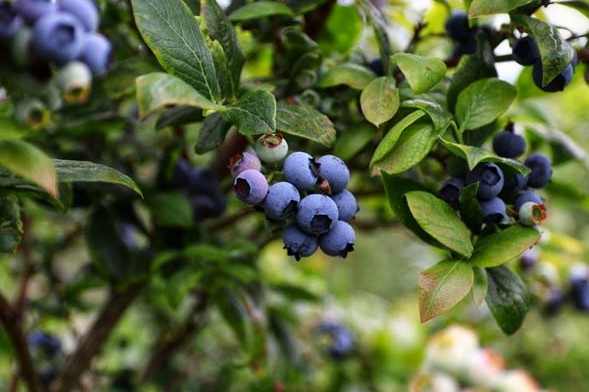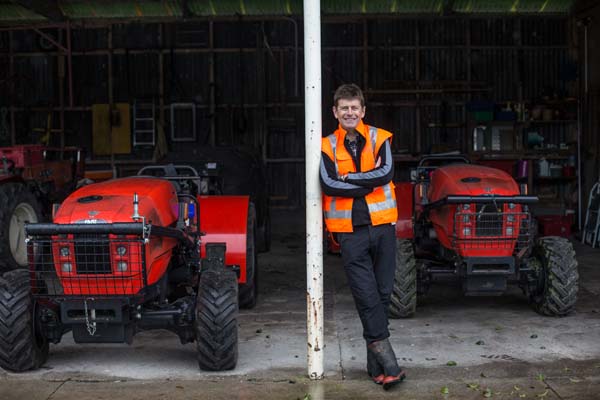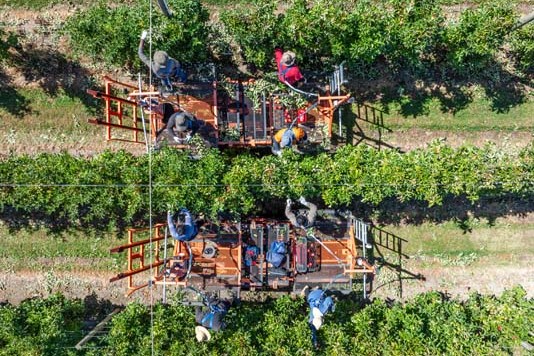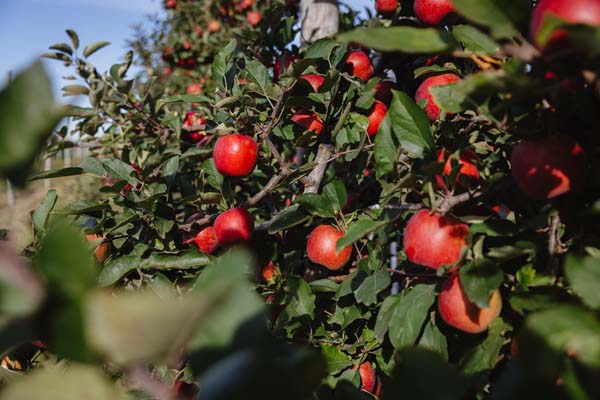As Northland warms, farmers are looking to subtropical crops to augment dairy earnings. By Delwyn Dickey.
 While the warming climate in Northland is going to see changes for farming it is also going to bring opportunities as the region becomes more subtropical.
While the warming climate in Northland is going to see changes for farming it is also going to bring opportunities as the region becomes more subtropical.
Farmers are already adapting their farm management practices to reflect that – trialing different pastures like cocksfoot and tall fescue – that are more robust in the drier summers and likely to withstand periods of drought better.
The warming climate, with fewer frosts, also opens up the possibility of farmers diversifying – to get more out of their land, and supplement their income while spreading their business risk.
HANKERING FOR A BASKET OF FRUIT?
Declan Graham, business manager, science at Plant & Food Research, believes Northland has a bright future as a food basket as the climate warms, with some big corporate growers already settling into the region.
While there have been avocados being grown on pockets of volcanic soils like at Mangawhai and Maungatapere outside Whangarei, a boom in the far north in the last five years has seen more than 1000 hectares planted in avocados. Much of that land was former dairy farms.
But dairy farmers don’t need to sell up to start investigating or experimenting with some of the crops that will now grow in the north. Plenty of crops don’t require hundreds of hectares of land. Some are already well known like blueberries.
The blueberry industry is expanding, and blueberries under cover are also attracting corporate attention in the north, Declan says.
Best grown in free draining acidic soils with a pH of between 4 – 5.5, a mature block of blueberries would be expected to produce more than 10 tonnes per hectare.
One berry exporter – Miro, owned by about 20 Māori trusts, iwi and collectives is focused on sustainable productivity and partnering with Māori landowners. In 2019 they indicated a five-hectare blueberry crop grown in plastic tunnel houses could return $104,000 per hectare annually over the first eight years of production from an investment of $300,000 per hectare.
Like most crops blueberries need good moisture from flowering through to harvest with the requirement for water increasing as the fruit increases its berry size. There is a very high labour demand at picking time.
Fancy a coffee
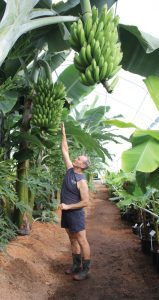 Coffee is another good example of a new northern crop that can be trialled on smaller pieces of land.
Coffee is another good example of a new northern crop that can be trialled on smaller pieces of land.
Northern areas are cooler than most coffee growing regions but this could work in a grower’s favour as harvesting would happen once a year rather than as in hotter climates, Declan says. Coffee in Australia is grown from Queensland to eastern New South Wales with this southern area close to our latitude. Usually grown at altitude with cool nights, this is not a growing necessity but is rather to lower the risk of rust, which is the biggest problem for coffee growing globally. Being cooler here, rust shouldn’t be such a problem.
Cooler climate beans are also ready to harvest all at once rather than ripening throughout the year as in hotter climates. This means it can be mechanically harvested all at the same time. There are also dwarfing cultivars available that can be grown intensively too.
Already a small number of people are growing it in the north, he says.
The first commercial grower was Icuras Coffee overlooking Doubtless Bay. After trials they say they found just the Bourbon Pointu (Arabica var Laurina), proved to be consistent enough with between 60 to 90% beanset. As rainfall has dropped considerably there in recent years they have now started irrigating.
Go nuts for peanuts
An emerging crop in the north looks to be peanuts with promising trials around the Dargaville area over the last couple of years.
“We’re working with local farmers plus staff from Farmlands and Kaipara Kai to see if peanuts could become another cropping option for Northland farmers and growers.”
Initiated by Pic’s Peanut Butter and backed by the Ministry for Primary Industries one of the trial sites was Pouto Peninsula on Allister McCahon’s dairy farm.
With sandy loam soil his farm proved ideal as the peanuts need friable fertile soil with soil temperatures above 18C from planting in October through to harvest in April.
Peanuts are an arable crop and so final large-scale cropping would need to be done on flat land with machine access. With large-scale horticulture like kumara-growing already set up in the area the infrastructure to support a new crop was already there.
The project is now under the control of Northlands economic development agency Northland Inc. who are now moving it on to seven trial sites around the north and producing larger quantities.
In a couple of years this new crop could be worth a serious look, he says. With the country importing 10,000 tonnes annually, and fresh nuts having higher nutritional value, there would likely be a good market for them.
Should the nuts continue to do well at trials, rather than going it alone, one possibility he sees for interested dairy farmers could be getting a group together and trialing it to know what it looks like. Then perhaps bringing in a contractor grower.
Chasing the dragon
Dragon fruit is originally from central America and is grown in the tropics around the world. It is also now being grown in Kerikeri. Plant and Food researchers have been breeding them in Vietnam in collaboration with Vietnam’s Southern Horticulture Research Institute, just outside Ho Chi Minh City. Several cultivars from that programme are in the process of licensing and marketing with some plants now growing at the Kerikeri Research Station as well.
For not-so-flat parts of a farm, table grapes could be a good option as we also import a lot from Australia, South America and the United States. Declan reckons Plant and Food have different varieties in NZ that could be worth trialling as well.
Pineapples, bananas, passionfruit and a new interest in citrus; there are plenty of options for farmers wanting to play around and have a go at fruit.
If that weren’t enough to make your head spin there are also arable crops like hemp, sorghum, and subtropical legumes.
One of the more interesting trials for adapting farm management practices using a new crop was run by Graeme Edwards near Whangarei who trickle-fed a small banana plantation from his dairy effluent pond. Along with reducing effluent Graeme hoped the banana palms could also act as summer fodder for his cows. Bananas are a fast-growing plant that really powers away through the heat of summer when other crops may be struggling.
AgResearch had a look at the trial, with funding from Our Land and Water National Science Challenge. They found no red flags from the trial, although more expensive research would be needed on the health effects on the cattle eating the banana palm or its fruit before it could be officially recommended as stock fodder.
Farmers looking at growing bananas for fruit, or sugar cane, would definitely need cattle-proof fences, says orchardist Geoff Mansell. While both are good options for farms, cattle find them very palatable, he says. An added bonus is both crops are also nitrogen-fixing.
Geoff recently took out the Massey University Innovation Award for Northland at the Ballance Farm Environment Awards as he embraced the changing northern climate and is creating new business opportunities for himself and other growers in the north as the climate warms.
While the main crop on his 4.7-hectare property Kotare Farm, near Whangarei, has been feijoas and figs, he is now growing and trialling subtropical fruit including in a new unheated greenhouse.
Bananas have been a big part of this change of focus and Geoff has many producing different varieties on his property. Some are edible like lady finger, Cavendish, and Honduran varieties while others are ornamental. They need a sheltered spot to grow as the large leaves, which are the carbohydrate factories for the fruit, are easily torn in the wind resulting in smaller fruit. But he has even found a variety that can be used as a windbreak.
Along with supplying the restaurant trade, being NZGAP certified makes it possible for him to supply wholesalers and retailers rather than going through farmers’ markets which is where many smaller growers sell.
Certification promotes sustainable farming practices in NZ, covers food safety requirements, safety and welfare of workers, and traceability.
Able to inspect other growers to ensure they meet the provisions of the certification, Geoff along with dietician and banana grower Roslyn Norrie set up Kotare Subtropicals to give other smaller growers access into the supermarkets in the future.
Geoff also runs a consultancy for others looking at growing these emerging subtropicals, including bananas and pineapples, commercially.
There is a real future for NZ-grown bananas, as we eat our way through 18kg each per year – 72,000t nationally, he says, all imported from the Philippines and South America. If there were more local growers he says they wouldn’t need to. And while locally grown fruit commands a higher price there is also a lot of interest in NZ-grown fruit, he reckons.
A likely banana site onfarm would have free-draining soil, good shelter, a sunny aspect and access to nutrients during their growing season. One hectare would carry 1400 plants, with each plant producing 10-15kg of fruit annually. Possibly the only pests are pukeko who like to peck into the centre of the stems.
While bananas will produce fruit at any time of the year Geoff recommends farmers check harvest times or other labour intensive times with any crop so they don’t coincide with busy times of the year on the farm – like calving – unless they have ready access to labour.
Some crops like blueberries can be very labour intensive during harvesting.
Along with the bananas, pineapples and papaya, there are persimmons, abiu, cherimoya, cassimoroa, pawpaw, turmeric, ginger and arrowroot and more able to be grown on Northland farms now and in the future, that could easily find their way on to local supermarket shelves.
Some will need an unheated greenhouse but many won’t.
Knowing the farm’s soil type is key to where to begin with a growing project.
Plant and Food have produced detailed soil maps for the north – particularly for the Kaipara District Council and they have a good understanding of where some of these crops would grow best. The maps for climate, soil temps, soil types, sunshine hours and the like were produced for the council through the provincial growth fund project.
The other big consideration is water. Most horticulture needs irrigation so if there isn’t a good supply through the heat of summer a large pond or reservoir will likely need to be dug. The Kaipara District Council is building two to three reservoirs on the Northern Pouto peninsula that would be sufficient to supply water for around 4000ha of new horticultural development. For Declan this is an opportunity not to be missed.
“If you are a farmer in that area this is a golden opportunity to seriously explore some form of horticulture on your farm, why wouldn’t you make the most of it?” he asked.
“This is an exciting time for horticulture in the north and farmers can be part of this too. “


